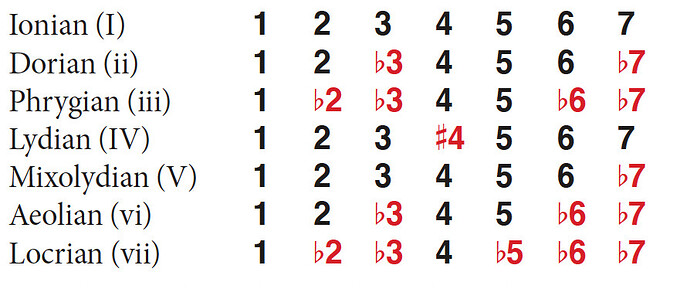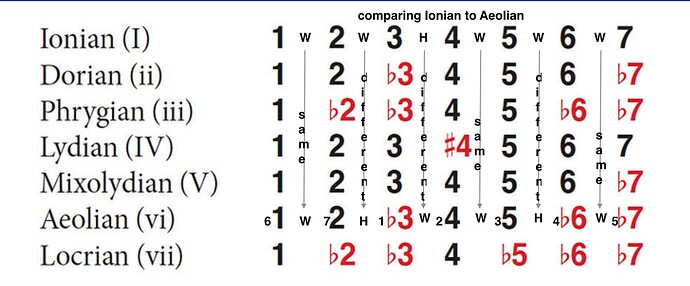I completed Chord Melody 1 and am almost finished Chord Melody 2. I am surprised how few posts on this forum are related to the Chord Melody courses. Besides the few posts I have added there seems to be little mentioned about these courses. It would have been very helpful to chat with people who have completed and grown with these courses. I love the course and am looking forward to breaking down songs and playing the harmony and melody at the same time. It would be very helpful to see videos of people actually breaking down a song and pulling out the melody and then adding the harmony at the same time. I am progressing quite well with this course but have hit a stumbling block in Chord Melody 2 lesson 10 “Adding the 6 Chord”. First issue: This new chord is the 6- chord, which we will need in order to create what most people call the “minor 2-5-1”. If it is the key of Am so the 6 chord is A ……… so the B chord is the 2 chord and E is the 5 chord and A is the 1 chord? I need clarity on this and also on Lesson 11 in the same course called The 3D (“three dominant”) chord How can the 3 chord be different then the 3 chord is in all the previous disscussion of the chords spefically why is note 5 sharped sorry to ramble but I have to figure this out to proceed. All help is welcome.
@Randy Hi Randy, I’m not in the Chord Melody course, but I think I can answer your question. If the key is Am, then the relative major key is C. All the numbers refer to C as being the 1. Therefore, the 5D is G7. In the minor 2-5-1, the chords are 7-b5, 3D, 6-. This would be B-b5, E7, A-. So let’s look at E7: the notes are E, G#, B, D. The D is D natural because it is a dominant chord which has a flatted 7th. So the only note in E7 that is not diatonic to C major is the G# in the E7 chord. This is why note 5 is sharped. I hope this helps.
Hi Woody, thank you for your reply. I am still confused. I understand that C is 1 so the A should be 6. So if you take the 2nd note from the 6th note that is B, but why is it Bb. If you take the 6 7 1 2 3 as we do in the counting on the fretboard in ifr the B is 2 frets away which makes the 2 a B not Bb. Is there anyone that can explain this on the phone for a few minutes. You could call me or I would be happy to call me. Thanks
To help you understand, the formula for Aeolian Minor is 1 2 b3 4 5 b6 b7. Here you have to look at A as being the 1 because the scale is A-.
Amaj is: A B C# D E F# G#
so you would get: A B C D E F G
So notice with the Aeolian formula, the 3rd, 6th & 7th notes of the MAJOR scale are flatted. Then you can see how this makes the scale A- have the exact same notes as C major, but in a different order. As for why it is B instead of Bb – There is no Bb in A major.
I think the confusion comes from thinking in terms of applying the formula to relative major root instead of the minor root, which in this case is A.
So when thinking about entire progression, you are thinking in terms of the key signature, which indicates the Major 1, from which every chord is relative. But in terms of an individual chord, you must look at it in terms of it’s tonal center–the root of the chord–being a scale that is a modification of that root’s major scale.
I’ve included an image of the 7 modes and how each root is modified. So if you were to use A as a root, it would only be congruent with C major in the Aeolian mode. A Phrygian will have a note outside the C major scale.
I’d still be happy to talk with you on the phone about it if you need to.
Chord Melody Guitar 1 & 2 questions - #2 by woodyhaiken Hi Woody would it be possible to speak on the phone for a few minutes. I am in Canada our time is 6:46pm now. Let me know if you are free now or when it might be convenient. I will email you my number. Thanks
I think this is where the confusion has originated. This terminology does not fit with the IFR numbering method, where you always relate back to note 1 for key signature, but any note number can be the tonal centre. Like key signature of C (note 1) and tonal centre Am (note 6).
Stick with the IFR numbering and it will be easier at the start.
Questions:
does a minor progression always start from the 6 chord?
Are the notes of the 3 chord tones in a minor progression 3 5# 7 2
In all different progressions is it only the 5th that needs to add a note out of the key or any change of a note?
I am still trying to figure this out. In this diagram attached notes are #'d or flatted in the 6 different modes how they how they compare to Ionian (major scale). In the example of Aeolion the 3/6/and 7 notes are flatted.I put 6/7/1/2/3/4/5 #'s by the existing 1-7 #s like our IFR numbering system starting from the 6 chord. Between the 7/1 its a half tone compared to the whole tone in the major scale so I see its flatted, between the 3/4 its a half tone so its flatted but between the 6/7 its a whole tone so why is the 7th flatted? I must be missing something.Any help would be appreciated!
No
No
No
You’re making it far more complicated than it needs to be.
Are you working through the IFR book as well, or just the Chord Melody courses? The book describes the method very clearly, and will probably help clear things up for you.
I just read the IFR book and I think I understand it now. Thanks


